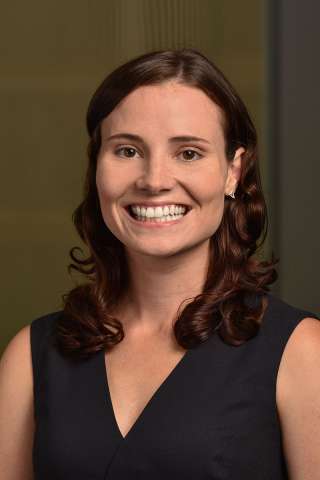
Q&A: Kathleen Kelley
July 11, 2019
In high school, Bloomberg Fellow Kat Kelley became a certified sexual assault crisis counselor in her home state of California. The experience was transformative. And her certification training exposed her to scientific theories and frameworks that provided a context that helped her understand the experiences of people her age and how to support them when they called the crisis hotline. The training drove home the idea that programming for adolescents must be tailored to adolescents, and that stuck with Kat.
Her training to become a crisis counselor inspired her to study international health at Georgetown University, where she was also involved in Take Back the Night, which raised awareness through community events about sexual violence, and Sexual Assault Peer Educators, which engages communities on campus in discussions on sexual misconduct through peer-facilitated discussions, training and education. After college, Kat wanted to find an evidence-based, scientific way to improve adolescent health in communities.
Today, Kat is a program analyst at the National Association of County and City Health Officials, or NACCHO, which serves as a partner and voice for county and city health departments at the national level. To ensure NACCHO and partners meet the needs of local health departments across the country, Kat collects input from NACCHO members, facilitates peer learning and engagement opportunities, and provides them with training and resources to strengthen their work.
We talked to Kat, who is pursuing a master’s at Johns Hopkins Bloomberg School of Public Health, about adolescent health needs, a recent project to improve adolescent sexual health and her time as a Bloomberg fellow.
What are the challenges to addressing adolescent health needs?
Because adolescence is seen as a relatively healthy period of life, it’s often not considered a priority in the face of limited resources for public health. People often wrongly assume that health programs and services that target children and adults are appropriate for adolescents, but young people have unique health needs and face distinct barriers in accessing health services and information. This is especially the case for stigmatized services like mental health, substance use and sexual health. The barriers adolescents face include stigma, confidentiality concerns, cost, and conflicts between clinic and school or work schedules. We need to prioritize these neglected areas of adolescent health, and my primary focus as a Bloomberg Fellow is sexual and intimate partner violence. Because these forms of violence are associated with mental health disorders, substance use, and sexual risk behaviors and have long-term negative consequences for employment, we really need to be addressing them during this consequential period.
Tell me about a project you’ve worked on.
I recently wrapped up a project aiming to build partnerships between local health departments and local school districts to advance adolescent and sexual health in their communities. We worked directly with four local health departments across the country to identify local adolescent health priorities and strategies to address them in collaboration with local stakeholders. Health departments and schools are both invested in the health and well-being of young people, but they have different priorities and use different language and strategies. It can take a lot of upfront work to establish and strengthen relationships. But once they’re in place, they have short- and long-term benefits, often that go beyond the original purpose of the partnership.
Of the four health departments, one is working with a local high school to pilot a new sex education curriculum. Another is integrating concepts of sexuality education into existing social-emotional learning approaches used by the local school district. The third department created a webpage to connect adolescents with local sexual health resources. And the fourth one has increased STI testing in school-based health centers, which they’re using as an entry point to have conversation with students about sexual health and safety.
What do you hope to take away from your time as a Bloomberg Fellow?
I came to the Bloomberg School because I want to hone my skills in program design, implementation and evaluation so that I can better contribute to the burgeoning field of sexual and relationship violence prevention, particularly as it relates to adolescents and emerging adults. Adolescent health is a critical yet neglected field within public health, and I hope to deepen my understanding of adolescent health and development so that I can design public health programming that is responsive to the needs of young people.
Connect With Us
Receive all the latest news from the Initiative by signing up for the American Health Dispatch newsletter, subscribing to the American Health Podcast, and subscribing to our YouTube channel.
Contact Us